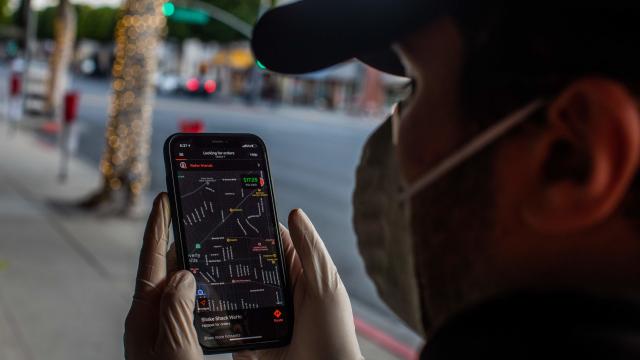If you see smartphones dangling from trees outside an Amazon delivery station or your local Woolworths, it’s not because gig-economy Christmas decorations are already up. (It happens earlier every year!) Those phones are there for contract delivery drivers who are gaming Amazon’s distribution system.
Bloomberg has a good rundown of how the scheme works, and it is pretty ingenious. A shadowy someone places multiple devices in trees near an Amazon delivery station. Drivers using Amazon’s various delivery apps to get their route assignments then sync their phones to those clustered around the pick-up point. Phones closest to the station will be pinged when a delivery is ready for a driver — before anyone else not using the system has a chance to claim it:
The phones in trees seem to serve as master devices that dispatch routes to multiple nearby drivers in on the plot, according to drivers who have observed the process. They believe an unidentified person or entity is acting as an intermediary between Amazon and the drivers and charging drivers to secure more routes, which is against Amazon’s policies.
The perpetrators likely dangle multiple phones in the trees to spread the work around to multiple Amazon Flex accounts and avoid detection by Amazon, said Chetan Sharma, a wireless industry consultant. If all the routes were fed through one device, it would be easy for Amazon to detect, he said.
“They’re gaming the system in a way that makes it harder for Amazon to figure it out,” Sharma said. “They’re just a step ahead of Amazon’s algorithm and its developers.”
This not only lets drivers pick up deliveries a split second before their fellow drivers/competitors but also makes it harder for Amazon to track down the offending drivers. It’s also a way for drivers who might not be allowed to work for delivery apps, such as undocumented people or those without valid driver’s licenses, to make some cash by borrowing another driver’s identity. The legit driver accepts a delivery job and basically outsources it to a shadow driver.
Folks in the gig economy are feeling the pinch of competition more acutely than ever. COVID-19 means fewer people are using Uber or other services, causing those drivers to seek other forms of income. High unemployment is also pushing more people into the gig economy to make quick cash doing deliveries. The total number of people claiming benefits in the U.S. in all programs for the week ending August 15 was 29,224,546, an increase of 2,195,835 from the previous week.
Amazon, for its part, is investigating the scheme after multiple drivers complained, but it also told delivery drivers that the results of its investigation would not be made available to them.
